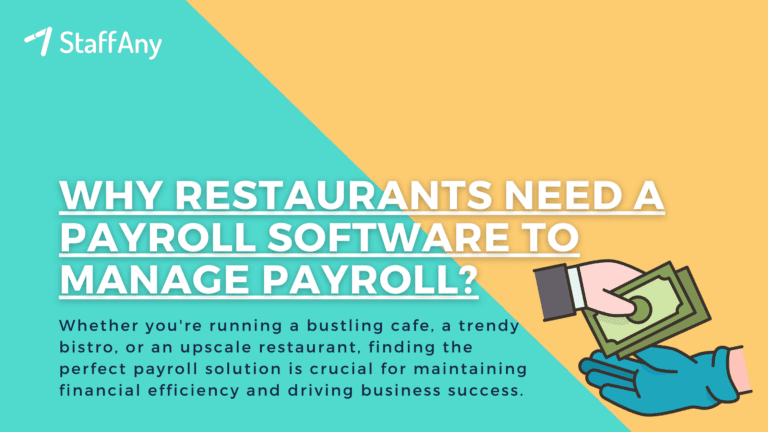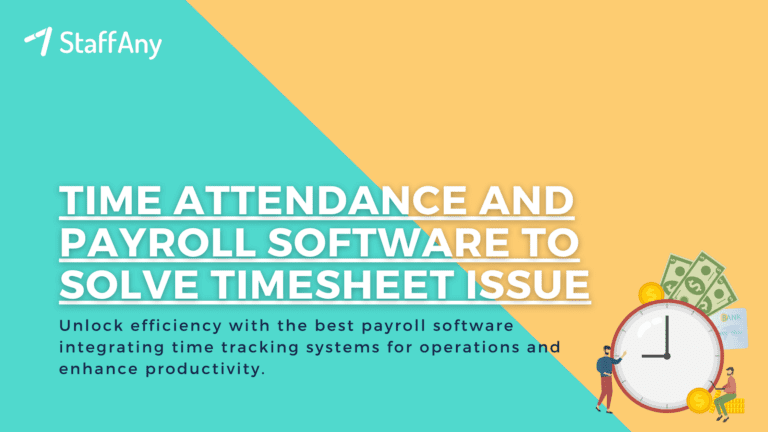Absenteeism in the workplace is a significant concern that can disrupt the efficiency and productivity of any organisation. It refers to the habitual or intentional absence of employees from work, leading to work disruptions and potential financial losses. Addressing the issue of absenteeism is crucial for maintaining a healthy work environment and ensuring the smooth functioning of a business.
In this article, we will explore what absenteeism in the workplace entails, its impact on businesses, the primary causes behind it, and effective strategies to prevent it. Let’s get started!
What is Absenteeism in the Workplace?
Absenteeism in the workplace refers to the recurring or prolonged absence of employees from their designated workstations. It includes both authorised leaves, such as sick leaves and annual vacations, and unauthorised absences, where employees miss work without any valid reason or approval.
While occasional absences are a part of any work environment, chronic absenteeism can be detrimental to an organisation’s success. Chronic absenteeism may suggest underlying issues that need to be addressed for a healthier work atmosphere.
Read more: The Importance of Employee Engagement for Business
The Impact of Absenteeism in the Workplace
Absenteeism in the workplace can have far-reaching consequences that extend beyond immediate work disruptions. Let’s explore some of the notable impacts:
1. Reduced Productivity
When employees are frequently absent, it affects the overall productivity of the workplace. Workflows may be interrupted, and the remaining employees may need to take on additional responsibilities, leading to decreased efficiency. This decrease in productivity can hinder the achievement of business goals and objectives.
2. Increased Costs
Absenteeism can result in increased costs for the organisation. Hiring temporary replacements, paying overtime to cover shifts, or investing in employee training can all lead to financial strain. These additional costs can eat into the company’s budget, affecting profitability.
3. Decline in Team Morale
Frequent absences can lower team morale as it places additional stress on those who are present, creating an atmosphere of frustration and demotivation. Team members may feel overburdened and unappreciated, leading to a negative work environment.
4. Adverse Effect on Quality
With reduced staffing, the quality of work may suffer due to increased workload and lack of attention to detail. This decline in quality can affect the company’s reputation and customer satisfaction, leading to potential business losses.
Read more: Understanding Employee Management System and Its Benefits
Primary Causes of Chronic Employee Absenteeism
Addressing the issue of chronic absenteeism requires identifying its root causes. Let’s delve into the primary factors contributing to this problem:
1. Illness and Health Issues
Health problems, both physical and mental, are a major cause of absenteeism in the workplace. Chronic conditions, stress, and burnout can lead to extended leaves. Employers should prioritise employee well-being and offer support for health-related challenges.
2. Low Job Satisfaction
Employees who are dissatisfied with their jobs or feel unappreciated are more likely to be absent regularly. A lack of job satisfaction can lead to a disengaged workforce. Creating a positive work culture and recognising employee efforts can help boost job satisfaction.
3. Poor Working Conditions
Unfavourable working conditions, such as inadequate facilities, lack of necessary resources, or unsafe environments, can contribute to absenteeism. Providing a conducive work environment is essential to retaining employees.
4. Personal Reasons
Family obligations, childcare issues, transportation problems, and other personal reasons can also lead to employees missing work. Offering flexible work arrangements and understanding employees’ personal needs can help mitigate these reasons.
Read more: 15 Employee Engagement Activities to Keep Your Staff Happy and Motivated
5. Organizational Culture
The organizational culture plays a pivotal role in employee absenteeism. Poor leadership, ineffective management practices, and communication gaps within the organization contribute to a negative workplace atmosphere, diminishing morale and prompting more frequent employee absences.
6. Workplace Environment
The physical and psychological workplace environment can impact absenteeism. Unsafe conditions and poor facilities can lead to increased instances of illnesses and injuries, while inadequate workspaces or break areas can affect overall employee well-being, contributing to absenteeism.
7. Lack of Flexibility
A lack of flexibility in workplace policies contributes to chronic absenteeism. Inflexible attendance policies and limited remote work options, especially in situations where flexibility could be beneficial, may result in increased absenteeism among employees seeking a better work-life balance.
8. Job Design and Fit
A mismatch between employees’ skills and job requirements can contribute to chronic absenteeism. When employees feel ill-equipped for their roles or face monotonous tasks that lead to boredom, job dissatisfaction increases, fostering an environment conducive to absenteeism.
9. Employee Relations
Interpersonal dynamics at work, including conflicts with colleagues or supervisors, are considered causes of absenteeism. Workplace bullying or harassment can have a detrimental impact on mental health, leading to increased absenteeism as employees seek to distance themselves from negative interactions. Addressing employee relations is crucial for minimizing absenteeism and fostering a healthy work
Read more: Understanding Staff Welfare Meaning and Its Objectives
7 Strategies to Prevent Absenteeism in the Workplace
To combat absenteeism effectively, organisations can implement practical strategies to foster employee well-being and engagement. Here are seven effective approaches:
1. Flexible Work Arrangements
Implement flexible work hours or remote work options to accommodate employees’ personal needs and reduce the pressure that might cause absenteeism. This approach empowers employees to achieve a better work-life balance.
2. Employee Assistance Programs
Provide access to employee assistance programs that offer counselling and support for mental health and personal issues. Prioritising employee well-being can positively impact attendance and overall performance.
3. Wellness Initiatives
Promote employee wellness through fitness programs, health screenings, and stress management workshops to improve overall health and reduce sick leaves. Healthy employees are more likely to be present and productive.
Read more: Employee Turnover Rate: Measuring and Reducing
4. Recognition and Rewards
Recognise employees for their hard work and contributions, fostering a sense of appreciation and job satisfaction. A positive work culture encourages employees to be more committed and loyal.
5. Clear Attendance Policies
Establish transparent attendance policies that outline the consequences of absenteeism and the procedures for requesting leave. Communicate these policies effectively to ensure employees understand the expectations.
6. Training and Development
Invest in employee training and development to enhance skills and job satisfaction, making employees feel valued and motivated. Providing opportunities for growth can increase employee commitment to the organisation.
7. Open Communication
Encourage open communication between management and employees, providing a platform for employees to express concerns or seek assistance when needed. A supportive environment fosters trust and loyalty.
Absenteeism in the workplace can significantly impact an organisation’s productivity, financial stability, and overall work culture. By understanding its causes and implementing preventive strategies, companies can create a supportive and engaging environment that encourages employee attendance and performance.
Prioritising employee well-being and satisfaction can go a long way in reducing absenteeism and building a successful and thriving workplace.
Read more: 10 Pro Tips for Effective Workplace Communication
Streamline your Staff Schedule with StaffAny Scheduling Software
Revamp your business with StaffAny’s cutting-edge employee shift scheduling software. Say goodbye to outdated tools and embrace the best employee scheduling tool in the market. Save time and money while managing employee rosters with ease.
With StaffAny’s user-friendly interface and on-the-go scheduling capabilities, you can achieve greater cost control and efficiency in managing your workforce. Utilise schedule templates and experience improved employee management like never before. Take the first step towards a more productive workplace by exploring StaffAny’s employee shift scheduling software today!











